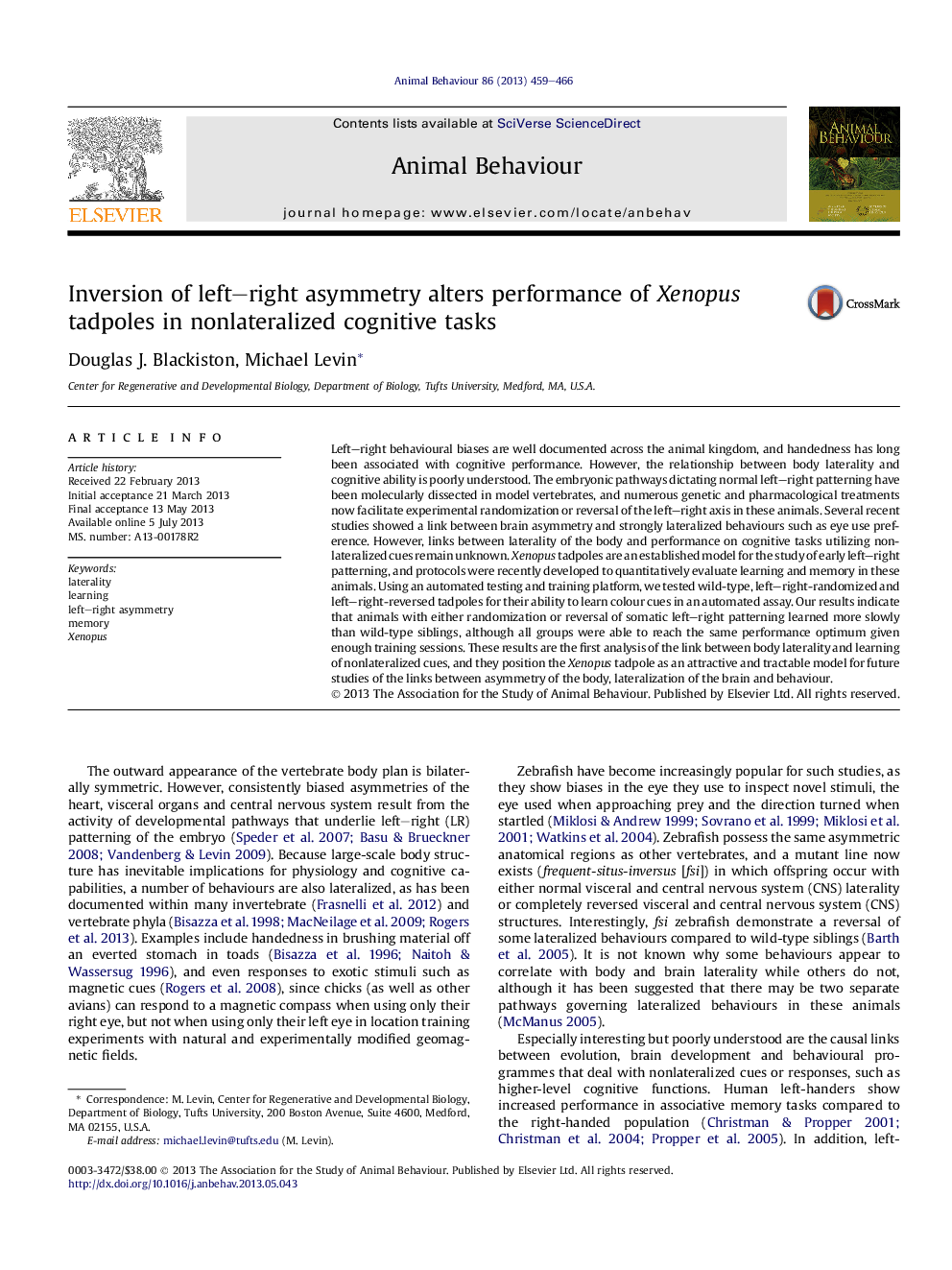| کد مقاله | کد نشریه | سال انتشار | مقاله انگلیسی | نسخه تمام متن |
|---|---|---|---|---|
| 2416613 | 1104282 | 2013 | 8 صفحه PDF | دانلود رایگان |

• We show that Xenopus organ laterality is randomized by physical embryonic vibration.
• Normal tadpoles tended to swim in clockwise circles.
• Tadpoles with reversed body laterality swam in anticlockwise circles.
• Xenopus tadpoles demonstrated associative colour learning in an automated assay.
• Tadpoles with alterations of body laterality learned more slowly than normal.
Left–right behavioural biases are well documented across the animal kingdom, and handedness has long been associated with cognitive performance. However, the relationship between body laterality and cognitive ability is poorly understood. The embryonic pathways dictating normal left–right patterning have been molecularly dissected in model vertebrates, and numerous genetic and pharmacological treatments now facilitate experimental randomization or reversal of the left–right axis in these animals. Several recent studies showed a link between brain asymmetry and strongly lateralized behaviours such as eye use preference. However, links between laterality of the body and performance on cognitive tasks utilizing nonlateralized cues remain unknown. Xenopus tadpoles are an established model for the study of early left–right patterning, and protocols were recently developed to quantitatively evaluate learning and memory in these animals. Using an automated testing and training platform, we tested wild-type, left–right-randomized and left–right-reversed tadpoles for their ability to learn colour cues in an automated assay. Our results indicate that animals with either randomization or reversal of somatic left–right patterning learned more slowly than wild-type siblings, although all groups were able to reach the same performance optimum given enough training sessions. These results are the first analysis of the link between body laterality and learning of nonlateralized cues, and they position the Xenopus tadpole as an attractive and tractable model for future studies of the links between asymmetry of the body, lateralization of the brain and behaviour.
Journal: Animal Behaviour - Volume 86, Issue 2, August 2013, Pages 459–466